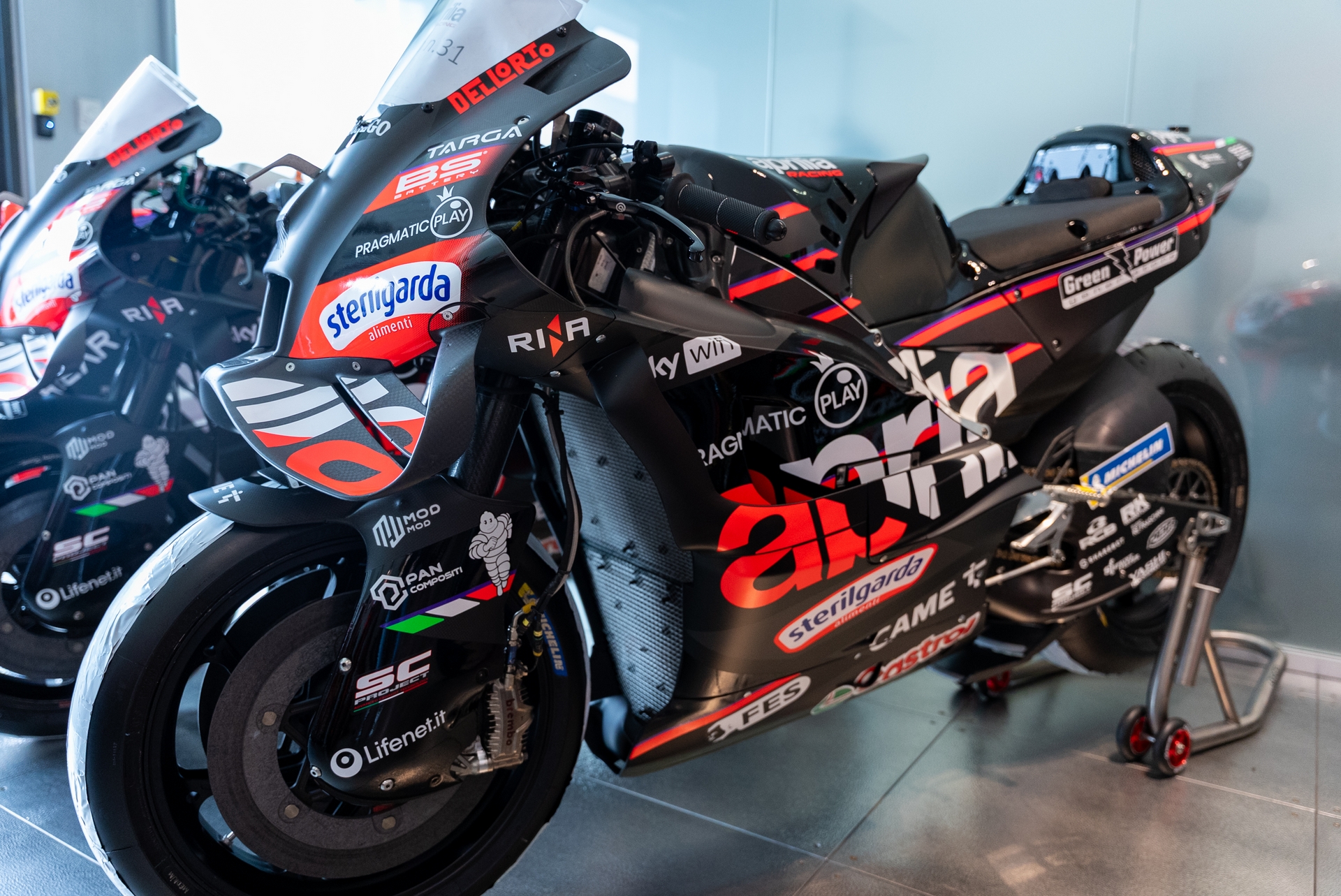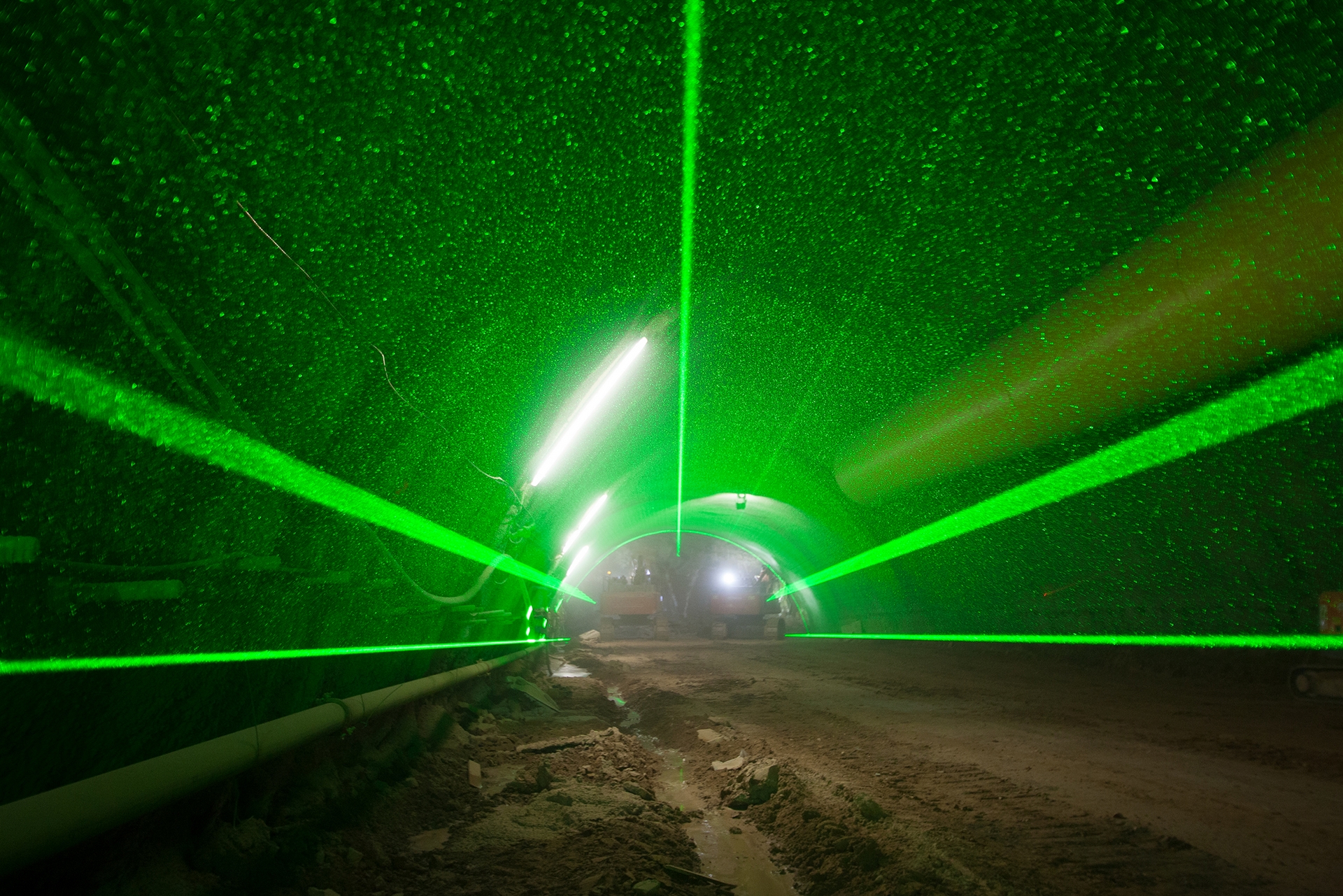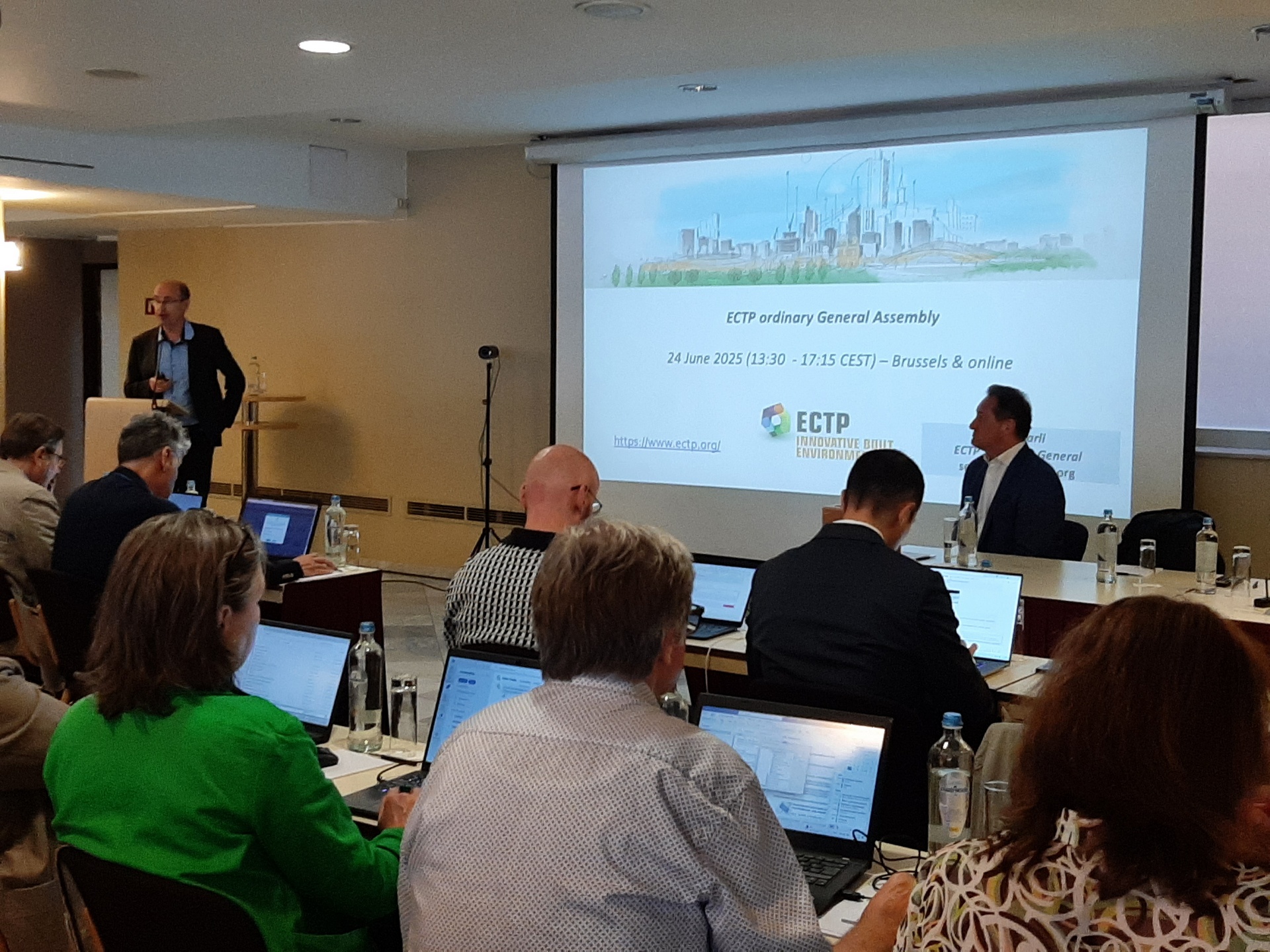
Staying competitive in a highly driven sport such as motorcycling is essential. In this field, and any field where excellence is the goal, innovation is not an option, it’s a necessity.
Aprilia Racing is one of the most successful brands in motorcycle racing history with 54 world titles to its name. A 100% Italian manufacturer based in Noale just west of Venice, Aprilia Racing has registered over 298 victories in the MotoGP World Championship, the equivalent of Formula 1 for the motorcycling industry. With these results, it is the most successful European motorcycle racing team in history.
The 2025 season marked the beginning of a new era for the company, with a major technical evolution of the RS-GP, the four-stroke V4 Prototype motorcycle series developed by Aprilia and in use since 2015.
We are looking forward to how the latest innovative version of our race winning motorcycle, the RS-GP25, which has been honed with the assistance of our partners including RINA, performs.
When it comes to innovation, RINA and Aprilia Racing share the same vision.
To innovate means embracing the new, even when it is not fully understood. It takes an open mind and a ‘what if’ and ‘can do’ mindset - something that is deeply ingrained in Aprilia’s DNA, and is also fully present at RINA. To achieve our goals, we must move forward together on a path that is not always straightforward, but full of obstacles and unexpected turns.
It is precisely this shared spirit, and relentless drive to raise the bar, that enables us to go further. Sometimes you need to pause and reassess - but that is part of the process. It is what drives growth, and ultimately, excellence.”
As Head of the Vehicle Department, I vividly remember the first meeting with RINA: I proposed projects and ideas that were highly ambitious - even by my own standards – and with very high stakes. They were real challenges, but we knew we wanted to take them on.
We needed a top-tier partner, capable of providing the technical support required - and we found that in RINA.
Their expertise, combined with genuine human values that came across from day one, allowed us to begin a journey that is still ongoing. This is why we truly hope to continue this collaboration with RINA for a long time: for us, it holds strategic importance.
In practical terms, the partnership opens up many opportunities: from software development to mechanical engineering, from hydraulics to advanced materials.
Having access to the breadth of expertise and knowledge that RINA brings to the table allows us to improve, to innovate, and to make our product increasingly competitive.
Since its inception in 2023, the collaboration between RINA and Aprilia Racing has already resulted in advancements across multiple areas, including advanced performance data analysis, the creation of an innovative performance monitoring system, and the development of solutions to reduce the weight of motorcycle adhesives.
RINA brings key technological know-how from a variety of sectors, including cutting edge sectors such as the aerospace industry. This enables us to apply skills from other areas to bring and achieve new standards in motorsport.
The 2025 season saw the exciting arrival of 2024 World Champion Jorge Martín to the Aprilia team, as well as one of the best Italian talents, Marco Bezzecchi. We look forward to RINA’s continued support as we push the limits of performance and innovation on the track.
Marco de Luca is Head of the Vehicle Department at Aprilia Racing, the racing factory team of Aprilia which competes in the highest class of motorcycle road racing, the MotoGP World Championship.
Marco has held the position since 2019, and brings over 30 years of experience in motorsport and the automotive industry to the role. At Aprilia Racing, he has contributed his outstanding technical expertise developed in both four-wheel motorsport and high-performance automotive engineering. In particular, Marco has played a key role in the development of RS-GP, the four-stroke V4 Prototype motorcycle series developed by Aprilia which has been used by the team in the MotoGP World Championship since 2015.
Marco began his career in 1990 with the Minardi Formula 1 team and evolved through roles of increasing responsibility at BENETTON Formula Ltd, Ferrari (Formula 1 and Gran Turismo), Lamborghini Automobili, the HWA AMG-Mercedes DTM Team, and McLaren Automotive.

ACCIONA’s goal is to be an acknowledged leader in developing regenerative basic infrastructure assets which are designed to ensure people’s well-being and the conservation of the planet.
Today we operate three technology and innovation centers focused on sustainable solutions in construction, water technologies, and renewable energy.
The three centres define their strategy and business priorities according to the company goal, in order to create a true impact in the different business areas and in the solutions we deliver to society.
ACCIONA has developed an extensive portfolio of innovative solutions that provide an end-to-end response to the challenges facing humanity, including solutions in energy, transport, water, cities etc.
The construction sector is facing several different challenges such as low productivity ratios, an aging skillforce, a high carbon footprint, and large resource consumption.
We are tackling these challenges by positioning our R&D projects across three main areas: Industrialization, Digitalization and Decarbonization. As such, we are working on digitizing our construction projects, and capturing and analyzing the data our projects are generating, and using these data as a decision support tool. With real-time processing of the data, we can mitigate risks, reduce schedule deviations and take measures for increased productivity.
We are also working to reduce the carbon footprint in our projects, by replacing traditional materials with low-carbon ones. Last but not least, we are working towards the automation of different construction processes, and the introduction of robotics or collaborative robots (cobots) to carry out different project activities.
Our construction business is international, with a large share of construction projects located out of Europe. Hence, we are always thinking globally, and how technologies can be replicated in the countries where we are present, all the time adapted to local regulation, standards or manpower.
Our R&D Centre counts some 60 engineers and more than 14 state-of-the-art labs, plus two workshops for large scale prototyping. To make sure our projects are relevant, we work around a multiannual research and technology plan, which is reviewed and updated yearly.
The main goal at the Construction Technology Centre in ACCIONA is to develop or integrate technologies that will contribute to create a significant impact in our construction projects.
All of our developments must bring some tangible benefit for our projects, being a reduction in cost, time savings, environmental or sustainability improvement and so on.
Javier Bonilla is the Innovation and Digital Manager at ACCIONA, a global group dedicated to the the development and management of infrastructure (construction, water, industrial and services), particularly in the field of renewable energy.
Javier leads ACCIONA’s Digital team where he is responsible for the development and integration of digital tools and services in projects, the deployment of BIM strategy, and data integration in the company.
As Innovation Manager, Javier is also responsible for innovation partnerships and the creation of innovation networks, including participation in European R&D programs. He is a member of the European Construction Technology Platform (ECTP) Steering Committee and Presidium.
Javier has a M.Sc. in Civil Engineering and a B.Sc. in Economy and Finance. He has been with ACCIONA since 2004, starting as a researcher in the R&D Department in the field of Fibre Reinforced Polymers in construction, and subsequently as Project Manager in EU research projects.

The European Construction and sustainable Built Environment Technology Platform (ECTP) was founded in 2004 to promote and influence research and innovation in the construction industry and the wider built environment*.
The goal of the platform is to identify the technical, environmental and societal needs to be met, as well as improve the competitiveness of the European sector so that it could compete in the international market.
Europe’s population of more than 450 million people spends more than 90% of their lives in buildings and other built structures, making it essential to put humans at the centre of proposals.
The platform today has 160 member organisations across 26 European countries, and counts a range of companies, from large enterprises to innovative SMEs, universities and research organisations, and professional organisations.
From 2010 onward the energy transformation and the path to decarbonisation have added an extra element to the platform’s work.
Our aim is to ensure a high quality sustainable built environment for the largest number of citizens with the lowest environmental impact. This means creating a safe, resilient and user-centric built environment based on a socially responsible circular economy which also respects Europe’s cultural heritage.
ECTP is used to create position papers, and subsequently Strategic Research & Innovation Agendas (SRIAs), which are discussed with the European Commission (EC). In this way, members can influence the future agenda of the EC.
The ECTP is currently running six committees: Built Environment Decarbonisation; Infrastructure and Mobility; Materials and Sustainability; Heritage and Regeneration; Built for Life; and Digital Built Environment. Each committee is developing strategic research and innovation, producing position papers on a regular basis.
A key element of our work is our relationship with the European Commission, which includes close discussion of issues relating to innovation in construction and the built environment. The most recent partnership between the EU and ECTP is the Built4People (B4P) Partnership which, under the Horizon Europe research funding programme (Cluster 5: climate, energy and mobility), aims to bring together the whole value chain to accelerate people-centric innovation for a sustainable built environment.
The ECTP has signed a seven-year memorandum of understanding under which the EU will provide €380 M in funds, while ECTP members will contribute a similar amount of in-kind contributions. The accent is on full decarbonisation over the life cycle of the built environment, incorporating the circular economy.
The programme aligns with three major EU policies: the European Green Deal, the Renovation Wave (aimed at increasing the level of building renovation in Europe) and the New European Bauhaus (a policy and funding initiative launched by the EC in 2021 which aims to revive the radical approach of the original Bauhaus School).
The ECTP works with the EC on Europe’s Research Framework Programmes. The EC is currently preparing its 10th edition where it should incorporate new ideas for innovating in the construction and built environment sphere.
ECTP is currently exploring innovation around two key concepts which may see adoption in FP10: Digital Transformation and Circular Transformation.
Both contribute to resource efficiency over the full life cycle, from inception to design, and from construction to renovation, demolition and waste management.
As per the European Affordable Housing initiative, ECTP is active in identifying challenges, gaps and needs, closely working with Housing Europe, the European Federation of Public, Cooperative, and Social Housing, which represents an estimated 10% of housing in Europe.
Meanwhile, we are also working to encourage greater investment from the private sector, where construction arguably lags behind some other industrial sectors such as manufacturing.
Alain Zarli is Secretary General of ECTP, the European Construction Technology Platform, and Managing Partner at R2M Solution. He was formerly Head of the “Innovation Numérique pour la Construction” division at the Centre Scientifique et Technique du Bâtiment (CSTB) in the “Technologies de l’Information et Diffusion du Savoir” department (Sophia-Antipolis, France), and European Affairs manager in CSTB.
His main fields of interest are Information and Communication Technologies (including programming languages and compilation, semantic modelling, rule-based languages and knowledge-based systems, distributed architectures, software components, and technologies for smart constructions) and their broad application to the built environment and the construction industry, in particular BIM and Digital Twin technologies.
He has been the Project Coordinator of various European collaborative FP5, FP6, FP7, Horizon 2020 and Horizon Europe projects. He has been active for many years in various ECTP initiatives, and is currently responsible for the Built4People Partnership under the Horizon Europe Framework Programme. Among other things, he also participates in the EC Advisory group for ICT Infrastructure carbon neutral cities, and the EIP SCC Operational Implementation Plan.
* The Built Environment includes all the human-made surroundings that provide the setting for human activity. This ranges from buildings, to infrastructure, to networks (mobility, energy, communication, etc).

Hybrid AC/DC and HVDC power systems have the potential to increase energy efficiency, and support the widespread integration of renewable energies.
The transformation of current AC power systems to hybrid AC/DC and with HVDC brings several challenges, however. Common power systems, and also the SCADA system, were originally designed for AC grids. Therefore, maintaining the stability of the power system is the most pressing technical and operational challenge.
Frequency, rotor, voltage, oscillation, and protection schemes must be updated properly to ensure the future reliability of the hybrid AC/DC power systems.
PSI is closely involved in the DAEDALOS project, a 48-month scheme divided in 7 Work Packages (WP) that aims to develop a comprehensive framework and advanced software tools to support the planning, operation and monitoring of AC/DC hybrid systems and MVDC/HVDC grids on a state-of-the-art SCADA system.
The DAEDALOS project will contribute to the acceleration of the energy transition and the integration of intermittent renewable energy sources (RES).
The project comprises the partners from European grid operators, industry - such as PSI - and leading research institutes. This collaboration is well placed to achieve the evolution towards hybrid AC/DC power systems. It will also work on developing the software tools to cover the aspects of grid planning, operation, and monitoring for the hybrid AC/DC.
DAEDALOS is arguably unique in that it covers the complete aspects necessary for system stability from grid planning, operation and monitoring. It also includes the research based on mathematical methods and machine learning.
PSI will focus on the development of a decision support tool based on dynamic security assessment (DSA) for the hybrid AC/DC power systems, and is involved in the demonstration from the control system perspective.
This also involves ensuring that the PSI software tool development can deal with the practical issues encountered by the grid operators of the TSOs and DSOs.
In order to integrate the advanced software tools or real-time algorithms developed in the project into the SCADA system, PSI is now working towards the Control System of the Future (CSF), which considers several aspects in order to tackle future sustainable power systems. Scalability and modularity are key features of the CSF: the advanced software tools developed within the project will be integrated as modular tools to our SCADA system.
After completing a degree in electrical engineering, Thomas started his career the Chair of Power Engineering at the University of Dortmund. He subsequently joined ABB in the field of network control technology.
Since 1997, Thomas has been working for the PSI Group in its “Electrical Energy” (EE) Business Unit.
His fields of activity are central software development, project management for medium-voltage/transmission grid operators and divisional project management.
From 2013 to 2023, Thomas was head of the “TSO&Rail” division, before becoming head of the Electrical Energy unit in October 2023.
Since December 2024, he is responsible for the newly founded business unit “Grid & Energy Management (GEM)” as Executive Vice President at PSI Software.

Submarine infrastructures are increasingly at the center of geopolitical, economic, and security interests.
The European submarine network is a vital Critical Infrastructure (CI). This underwater cable and pipeline network is crucial for the functioning of European society.
As threats become more hybrid and sophisticated, protecting these assets requires an approach that addresses both cyber and physical domains.
Key emerging threats include:
To address these converging risks, a shift from reactive defense to resilience-by-design and integrated risk governance is essential.
The EU-backed VIGIMARE project takes a systematic approach to strengthening the European network of submarine telecommunication cables, power cables and gas pipelines. It stands out for its integrated, multi-domain focus.
Key innovations include:
In short, it combines advanced technological capabilities, real-time intelligence sharing, and cross-sectoral coordination to address the growing hybrid threats to Europe’s submarine infrastructures.
Terna, Italy’s electricity transmission system operator, participates in the VIGIMARE project as the owner of the critical subsea infrastructure featured in the Mediterranean use case.
VIGIMARE’s emphasis on interconnections and interdependencies among infrastructure networks is crucial to achieving the EU’s dual objective of resilience and open strategic autonomy.
This systems-level approach acknowledges a fundamental reality: modern infrastructures are not isolated assets but deeply integrated nodes in a broader, interdependent ecosystem of digital, energy, military, and logistical domains.
As part of the VIGIMARE project, Terna is leading a strategically important pilot use case focused on its submarine interconnection infrastructures.
Terna’s contribution focuses on multi-vector hybrid attacks that combine cyber and physical tactics targeting HVDC submarine infrastructure.
The models account for operational, safety, environmental, and defense-level consequences, and include the simulation of coordinated threats such as SCADA manipulation, ICS-targeting malware, phishing, ransomware, and more.
These simulations go beyond traditional tabletop exercises, creating field-informed risk scenarios that push the boundaries of conventional critical infrastructure protection.
Terna is also providing Risk and Threat Modeling, Scenario-based Simulations, and Monitoring and Detection Strategies tailored to submarine assets, integrating cyber and physical risk indicators.
From the start, RINA has contributed significantly to promoting innovation and knowledge exchange within the VIGIMARE project.
Its involvement has helped create a collaborative environment where different expertise and perspectives come together, which in turn has supported the development of new approaches to managing cyber-physical risks.
This cooperation has supported steady progress and added value to the project overall.
Silvio Parente is a cybersecurity governance and risk management expert with significant experience in the protection of critical infrastructures. He currently works at Terna, Italy’s electricity transmission system operator, where he leads key initiatives within the Cyber Security Program and Portfolio, supporting the implementation of strategic activities aimed at enhancing the cyber resilience of the national power grid.
His work focuses on risk-based prioritization, performance monitoring frameworks, and the strategic development of cybersecurity initiatives.
Previously, he held positions at Cassa Depositi e Prestiti and Deloitte, where he led ICT governance, risk assessment, and compliance projects in complex organizational environments.
Silvio holds a Master’s degree with honors in Statistical Sciences and a second-level Master’s in Homeland Security, with a specialization in critical infrastructure protection. He is a Certified Information Systems Auditor (CISA) and has deep expertise in cyber risk analysis, internal control systems, and regulatory frameworks.